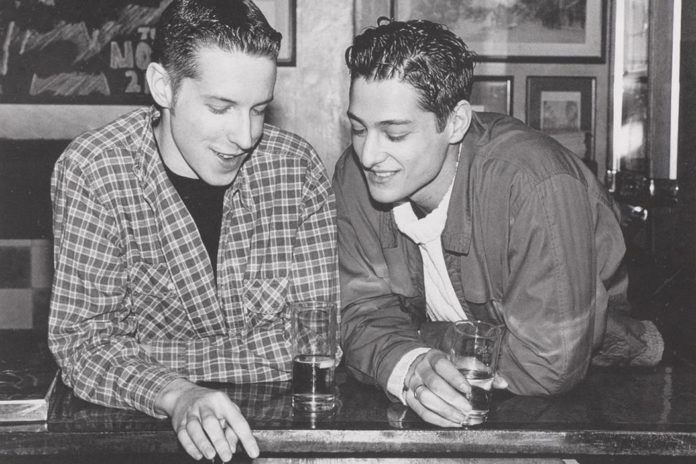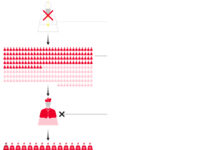
Gay bars, one of the few public places of congregation for LGBTQ+ people before the Stonewall rebellion of 1969, were flash points for the criminalization of same-sex sexual conduct, according to legal scholar Patricia A. Cain’s history of litigation for lesbian and gay rights.
These businesses were targeted both by the police and by organized crime. Some bar owners paid bribes to both entities; the famed Stonewall Inn was reputedly owned by members of the New York mafia. They were also subject to state liquor authorities—one focus of landmark legal challenges in the 1950s and 1960s.
Additionally, a broad interpretation of “homosexual acts” in the twentieth century made “lesbians and gay men think of themselves as criminals just for being who they were,” writes Cain. In addition to sodomy laws, they could be charged with vagrancy, loitering, lewd acts, and wearing a disguise (dressing in drag). Bars were frequent targets of police raids, and a liquor license might be revoked if officers caught patrons in certain acts.
In what Cain calls the first “successful American ‘gay rights’ case,” in 1951, the California Supreme Court ruled in Stoumen v. Reilly that the state could not suspend a bar’s liquor license for being a “disorderly house” simply because it catered to LGBTQ+ people. The state liquor authority had “acted arbitrarily in determining that the mere presence of homosexuals in a public bar was a threat to public welfare and morals.” The court concluded that the state couldn’t conflate homosexual status and homosexual conduct.
California’s state legislature then drafted new laws that allowed for the revocation of liquor licenses in places that were the resort of “prostitutes, pimps, panderers, or sexual perverts.” Despite Stoumen, the laws would be used to harass and close gay bars until these laws were declared unconstitutional, in 1959.
That year, Vallegra v. Department of Alcohol Beverage Control required “something more” than the mere presence of homosexuals in a California bar for authorities to revoke a liquor license. The meaning of “something more” wasn’t spelled out by the California Supreme Court other than “public displays that manifest sexual desires.” Such ambiguous wording kept the door open to closing gay bars, even if using liquor licensing to do so became less and less viable.
Weekly Newsletter
But with fifty states come as many as fifty different laws, and many more local ordinances. In 1967, Miami prohibited issuing liquor licenses to establishments that employed homosexuals, sold liquor to homosexuals, or allowed two or more homosexuals to congregate on the premises. This ordinance was upheld in a court ruling, which declared that it functioned to prevent “persons likely to prey upon the public” from recruiting other people for illegal acts.
That same year, 1967, New York and New Jersey followed the California idea of a difference between homosexual status and homosexual conduct. A liquor license could not be revoked solely on the grounds that the bar catered to people known to be LGBTQ+. Homosexual conduct, that ambiguous phrase, could still be the cause of a police raid, however. It was, in fact, a police raid that caused the rebellion at the Stonewall Inn in New York City. The bar’s clientele were sick and tired of being hassled just for drinking inside a bar. The “Stonewall Riot” beginning June 28, 1969, marked a turning point in the modern gay rights movement.
Support JSTOR Daily! Join our new membership program on Patreon today.








